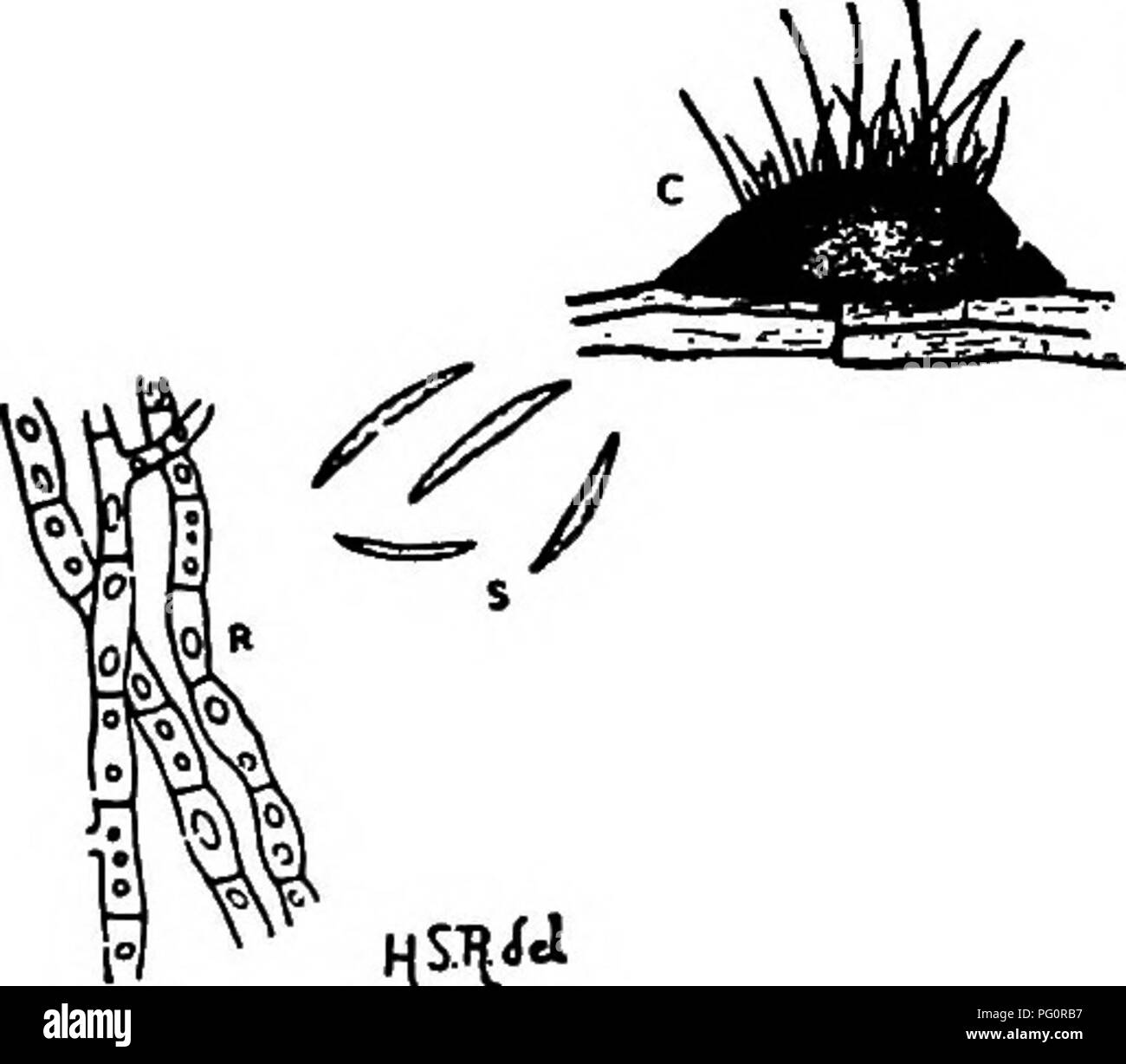. The fungi which cause plant disease . Plant diseases; Fungi. 496 THE FUNGT WHICH CAUSE PLANT DISEASE Asteroma De Candolle (p. 482) Pycnidia very small, globose, erumpent, often on a mass of hyphae; conidia ovate or short cylindric. In part =Gnomonia. See p' 274. About forty species chiefly parasitic. A. padi (D. C.) Grev. on Prunus=Gnomonia padicola. See p. 275. A. geographicum (D. C.) Desm. occurs on various species of Pomaceae; A. punctiforme Berk, on the rose; A. stuhlmanni Hen. on bananas and pineapples in Africa. A. codisei All. is said to be a serious parasite of Codiseum.^^ Vermicular

Image details
Contributor:
Central Historic Books / Alamy Stock PhotoImage ID:
PG0RB7File size:
7.1 MB (154 KB Compressed download)Releases:
Model - no | Property - noDo I need a release?Dimensions:
1689 x 1479 px | 28.6 x 25 cm | 11.3 x 9.9 inches | 150dpiMore information:
This image is a public domain image, which means either that copyright has expired in the image or the copyright holder has waived their copyright. Alamy charges you a fee for access to the high resolution copy of the image.
This image could have imperfections as it’s either historical or reportage.
. The fungi which cause plant disease . Plant diseases; Fungi. 496 THE FUNGT WHICH CAUSE PLANT DISEASE Asteroma De Candolle (p. 482) Pycnidia very small, globose, erumpent, often on a mass of hyphae; conidia ovate or short cylindric. In part =Gnomonia. See p' 274. About forty species chiefly parasitic. A. padi (D. C.) Grev. on Prunus=Gnomonia padicola. See p. 275. A. geographicum (D. C.) Desm. occurs on various species of Pomaceae; A. punctiforme Berk, on the rose; A. stuhlmanni Hen. on bananas and pineapples in Africa. A. codisei All. is said to be a serious parasite of Codiseum.^^ Vermicularia Fries (p. 482) Pycnidia superficial, or erumpent, globose depressed, to globose clavate, leathery or carbonous, black, ostiolate or not, beset with rather long, stiff, septate, dark colored bristles; conidia cylindric-fusoid, often curved. Some one hundred thirty species, chiefly saprophjrtes. V. dematium (Pers.) Fr. Pycnidia erumpent, superficial, 80-120 /!> conic, then depressed, often confluent, black, spines pale at the ends, 150-200 x 5 m; conidia cylindric-elongate, 20 x HSV** 4-^ M, apically rounded, curved. Fio. 341.—V. dematium. c, a nearly Commonly a saprophyte, this rhypiue.'""Ai^'R^k ^' '^°""' ^™S^ Occasionally causes as- paragus disease.*^ In Europe it is reported as the cause of much loss to the ginseng crop. On this plant it produces a stem anthracnose. The fungus was isolated and its cultural characters studied by Reed.** V. trichella Fr. Pycnidia ovate, small, black, spines long, at the apex of the pycnidium; conidia fusoid, curved, pointed, 16-25 x 4-5 /x.. Please note that these images are extracted from scanned page images that may have been digitally enhanced for readability - coloration and appearance of these illustrations may not perfectly resemble the original work.. Stevens, Frank Lincoln, 1871-1934. New York : Macmillan